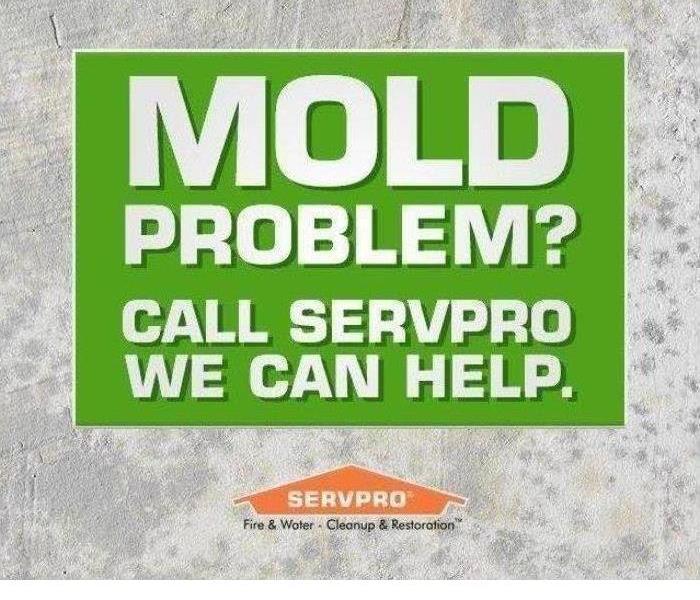Archived Mold Remediation Blog Posts
The Hidden Menace: The Importance of Finding and Treating Mold
6/20/2023 (Permalink)
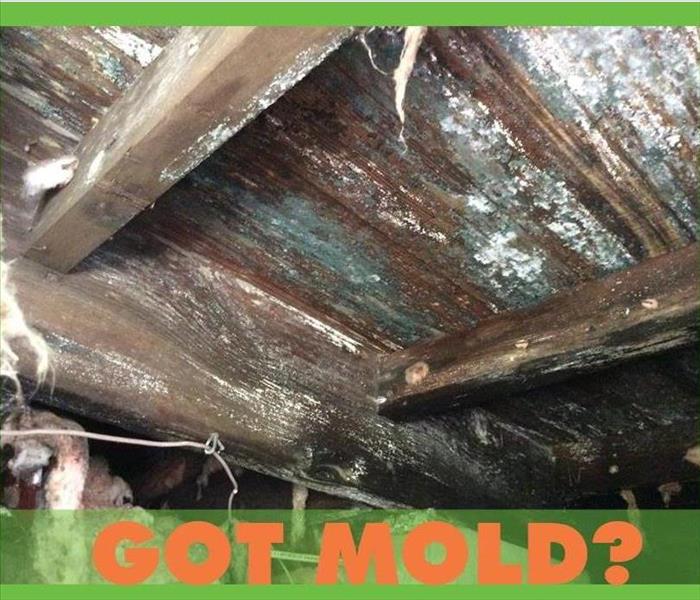 Got Mold? Call SERVPRO of Howell, Wall, Spring Lake, Asbury Park at 732-577-1010 today!
Got Mold? Call SERVPRO of Howell, Wall, Spring Lake, Asbury Park at 732-577-1010 today!
Mold is a stealthy intruder that can lurk in our homes, posing significant health risks and damaging our property. While it may often go unnoticed, the importance of finding and treating mold cannot be overstated. In this blog post, we will explore the hidden dangers of mold, its potential impact on our well-being, and the crucial steps to identify, address, and prevent mold growth in our living spaces.
Understanding the Dangers of Mold
Mold is more than just an unsightly nuisance. It releases microscopic spores that can trigger allergic reactions, respiratory issues, and even more severe health problems in sensitive individuals. Prolonged exposure to mold can lead to coughing, sneezing, asthma attacks, and other respiratory ailments. Furthermore, certain types of mold, such as black mold, produce mycotoxins that can cause severe health complications. It is essential to be aware of these dangers and take immediate action to safeguard our homes and the well-being of our loved ones.
Identifying Mold in Your Home
Detecting mold growth in your home can be challenging as it tends to thrive in hidden, damp areas. Keep an eye out for signs such as musty odors, visible mold growth, water stains, and discoloration on walls or ceilings. Pay close attention to areas prone to moisture, such as bathrooms, basements, and attics. If you suspect mold but cannot locate the source, it's wise to consult professionals who specialize in mold inspection and testing. Early detection is crucial in preventing mold from spreading and causing further damage.
The Importance of Prompt Mold Remediation
Once mold is discovered, swift and thorough remediation is vital to prevent its proliferation and mitigate potential health risks. Mold remediation professionals have the expertise and equipment to safely remove mold colonies, clean affected areas, and address the underlying moisture issues. DIY methods may not fully eradicate the problem and can lead to recurring mold growth. Professional intervention ensures a comprehensive approach to remediation, protecting both your health and property.
Preventing Mold Growth and Recurrence
Preventing mold growth is key to maintaining a healthy home environment. Ensure proper ventilation in high-moisture areas, promptly fix any leaks or water intrusion, and keep humidity levels in check. Regularly inspect and clean areas prone to moisture, such as bathroom fixtures, air conditioning units, and gutters. Consider using mold-resistant materials during renovations or repairs. By adopting these preventive measures, you can significantly reduce the likelihood of mold growth and protect your home.
As you now understand the importance of finding and treating mold, it's time to take action. If you suspect mold in your home or want to ensure a mold-free environment, don't hesitate to reach out to SERVPRO of Howell, Wall, Spring Lake, Asbury Park. Our experienced team specializes in mold remediation and can help you restore the safety and integrity of your property. Remember, prompt intervention is crucial in minimizing health risks and preventing further damage. Don't let mold compromise your well-being and peace of mind. Contact us today at 732-577-1010 for a comprehensive mold assessment and professional remediation services.
No Vacation From Mold During the Summer
7/1/2019 (Permalink)
There’s nothing like enjoying all the activities that go with the warm summer months. But with the beach, boardwalk, and outdoor fun, comes the perfect conditions for mold growth in your home and business.
Heat: Great beach days are also banner days for mold. Mold grows best in warm temperatures from 77 to 86 degrees.
Humidity: The hazy, hot and humid days often end with an afternoon thunderstorm. If you’re feeling the effects of increased moisture in the heated air, you can bet that the stage is set for mold to ramp up the growth process. Proper humidity levels should be kept between 30-50% inside your home or work space. Use a dehumidifier to ensure that humidity levels are kept low. But be sure to clean and maintain any dehumidifiers as well.
Ventilation: Along with the proper humidity levels, make sure that your home or office is well ventilated and kept at a comfortable temperature. Exhaust fans in bathrooms and kitchen can help. Opening windows and doors will increase air circulation. A programmable thermostat can be vital to regulate the proper temperature levels.
Vacation: If your summer includes a family vacation away from home, the proper plan for keeping the temperature, humidity and ventilation at proper levels with ensure that your return home won’t include large scale mold issues.
No matter what the season, SERVPRO of Howell/Wall is here to diagnose and remediate any mold issues that have occurred. Trust your home to the experience experts who will o the job right. Let SERVPRO of Howell/Wall worry about the mold, so you can have an enjoyable summer. (732) 577-1010. SERVPROhowellwall.com
Follow These Mold Safety Tips if You Suspect Mold
2/20/2019 (Permalink)
If you see visible mold, do not disturb it. You can inadvertently spread the mold infestation throughout your home. When mold is disturbed, the mold can release microscopic mold spores which become airborne and can circulate inside your home.
What to Do:
What Not to Do:
- Don’t touch or disturb the mold.
- Don’t blow air across any surfaces with visible or suspected mold growth.
- Don’t attempt to dry the area yourself.
- Don’t spray bleach or other disinfectants on the mold.
About Our Mold Remediation Services
SERVPRO of Howell / Wall specializes in mold cleanup and restoration, in fact, it’s a cornerstone of our business. Our crews are highly trained restoration professionals that use specialized equipment and techniques to properly remediate your mold problem quickly and safely.
If You See Signs of Mold, Call Us Today – 732-577-1010.
Two Important Steps When Dealing with Mold Damage in Howell/Wall
9/4/2018 (Permalink)
SERVPRO Can Help Remove the Moisture Source and Exterminate Mold Spores for Professional Remediation
Mold is unsightly, and its musty smell might make your Montgomery home a less comfortable abode. Some health effects can also be associated with staying in moldy environments over extended periods. Since the spores that produce mold are omnipresent in many parts of a home, the problem can be hard to eliminate. Luckily, almost all cases of mold infestations have a link to moisture, so it is possible to deal with them by eliminating the cause.
Minimizing moisture is one practical step necessary in fixing mold damage in Howell/Wall since microbes like mold thrive well where there is sufficient moisture. Before attempting to dry off the excess moisture, it is essential to find the source, which could be a leaking pipe or appliance. This way it is possible for dehumidifiers to eliminate the excessive moisture. Of course, the infestation or even the musty odor cannot disappear immediately moisture levels come down. This is why our SERVPRO team includes cleanup as part of the remediation.
Removing contaminated materials is another important step. This step applies if there are porous materials in the affected area. Even though you can clean such materials with cleansers and disinfectants, infestations usually exist with the fungal hyphae attaching below the surface of the porous material. It is therefore hard to eliminate the infestation entirely using cleaning agents. Materials like insulation and fabrics such as carpets fall in the removal category if heavily infested with mold.
Cleaning mold from hard surfaces is essential. In this case, cleaning agents are a perfect choice. Our SERVPRO technicians use EPA-registered broad-spectrum disinfectants, which are effective in killing spores. Since these agents only work when applied physically on the affected areas, we use various techniques to reach all surfaces including using foggers that deliver the antimicrobial agents in mist form to hidden areas in your property. We also allow the necessary dwell time and maintain correct PH and temperature levels because they influence the effectiveness of the disinfectants.
For proper remediation, you should call SERVPRO of Howell/Wall at (732) 577-1010. We evaluate the problem and use standard procedures to deal with the problem leaving your property "Like it never even happened."
TOP THREE PLACES TO CHECK FOR MOLD GROWTH
7/8/2018 (Permalink)
Mold. Just hearing the word can cause us all to cringe. It’s odorous, unsightly, and even dangerous to our health. And it can show up so fast that it can be shocking! Just knowing where to look and what areas are best to practice preventive measures in can help give you peace of mind.
Here are the top three areas to check regularly for mold growth:
The bathroom. This almost goes without saying, since everyone knows that mold likes water. And water is the name of the game when it comes to the bath area! Most bathrooms are cleaned thoroughly at least once a week, and these times are great for checking for mold. Look in the least traveled areas, such as corners of the linen closet, behind the toilet, under the sink. If there are, or have been, any leaks in these places in the past, these areas are in danger until they are fully dry. You can invest in a dehumidifier for your bathroom, and that can be a great help.
The kitchen. This area of your home is also a watery place, and it is used more than any other area in the house besides the bath. Keep an eye out for spills and leaks and clean them up immediately to ensure that they are not attracting mold spores, which are always in our air and cannot be removed. The trick is not giving them a place to land and settle!
The laundry room. This room, since it has large appliances, also has nooks and crannies that are not cleaned as often, since no one ever sees them. Add to that the humidity in the air and possible unseen leaks or drips, and you have a recipe for the establishment of a mold colony. Enlist help, pull the washer and dryer out from the wall regularly, and make sure the areas behind them are clean, dry, and disinfected. Make sure spills are cleaned and dried right away, as well.
Other areas to keep an eye on: hall closets, your garage, and/or basement.
SERVPRO of Howell/Wall is always here to help you with any issues related to water damage in your home or business, and we are mold remediation experts, too. Large-scale cleanups after flooding and fire are our specialties. Call us at (732) 577-1010, or visit our website: SERVPRO of Howell/Wall
Don't Kill Mold With Bleach
6/23/2018 (Permalink)
When most people see mold they think of treating it with bleach. To an untrained professional, cleaning mold with bleach can seem right. But here are three reasons why bleach is not the most effective choice to rid your home or business of mold.
1. Bleach loses effectiveness over time.
Chlorine bleach rapidly loses its effectiveness. Try leaving a glass of chlorinated water out on the counter for a few days. You’ll find the chlorine will evaporate. This happens within bleach containers as well. Evaporation means that it will be hard to determine the true potency of your chlorine bleach solution because the chlorine can escape through plastic. Perhaps the chlorine bleach you’re using has been sitting at the store, or in your home for months or longer. That will lessen its power to kill mold.
2. Bleach does not kill mold on porous surfaces. In fact, bleach can contribute to mold growth.
Yes, chlorine bleach can kill surface mold. But mold can grow deep roots within porous surfaces like wood and drywall. Those roots will not be affected by bleach. The bleach you apply remains on the surface while the water in the bleach goes deeper and can feed the mold growth.
And not only does mold have roots, mold also releases spores. These mold spores can get into the air and land anywhere. Once spores travel and land elsewhere, if the environment is right, more mold will grow. Chlorine bleach cannot stop mold from spreading in this way.
3. Bleach is toxic.
Chlorine bleach produces fumes that pollute the air and can become harmful to humans and pets. Chlorine bleach also generates a by-product called dioxin, which is linked to cancer. If you use bleach over time you can build up these pollutants in your home, business, or any environment.
So, you can use bleach to temporarily kill what’s on the surface but treating mold with bleach alone is not effective in the long run. You won’t know how potent the bleach you use is and using bleach means exposing yourself to harmful fumes.
Get Rid of Mold Issues for Good
Specialists in professional remediation can be your best bet when it comes to getting rid of mold effectively. Our crews at SERVPRO of Howell/Wall use special cleaners and equipment to get rid of mold, including spores. We can identify the full extend of your mold infestation and treat mold-infested areas safely and effectively. If you suspect mold, call us anytime 24/7 365 days a year at 732-577-1010.
More Information
SERVPRO of Howell/Wall publishes educational articles on how Manchester area residents and businesses can protect themselves from mold and natural disasters and restore their property after a flood, sewage spill or other harmful event.
Don't Kill Mold With Bleach
6/23/2018 (Permalink)
When most people see mold they think of treating it with bleach. To an untrained professional, cleaning mold with bleach can seem right. But here are three reasons why bleach is not the most effective choice to rid your home or business of mold.
1. Bleach loses effectiveness over time.
Chlorine bleach rapidly loses its effectiveness. Try leaving a glass of chlorinated water out on the counter for a few days. You’ll find the chlorine will evaporate. This happens within bleach containers as well. Evaporation means that it will be hard to determine the true potency of your chlorine bleach solution because the chlorine can escape through plastic. Perhaps the chlorine bleach you’re using has been sitting at the store, or in your home for months or longer. That will lessen its power to kill mold.
2. Bleach does not kill mold on porous surfaces. In fact, bleach can contribute to mold growth.
Yes, chlorine bleach can kill surface mold. But mold can grow deep roots within porous surfaces like wood and drywall. Those roots will not be affected by bleach. The bleach you apply remains on the surface while the water in the bleach goes deeper and can feed the mold growth.
And not only does mold have roots, mold also releases spores. These mold spores can get into the air and land anywhere. Once spores travel and land elsewhere, if the environment is right, more mold will grow. Chlorine bleach cannot stop mold from spreading in this way.
3. Bleach is toxic.
Chlorine bleach produces fumes that pollute the air and can become harmful to humans and pets. Chlorine bleach also generates a by-product called dioxin, which is linked to cancer. If you use bleach over time you can build up these pollutants in your home, business, or any environment.
So, you can use bleach to temporarily kill what’s on the surface but treating mold with bleach alone is not effective in the long run. You won’t know how potent the bleach you use is and using bleach means exposing yourself to harmful fumes.
Get Rid of Mold Issues for Good
Specialists in professional remediation can be your best bet when it comes to getting rid of mold effectively. Our crews at SERVPRO of Howell/Wall use special cleaners and equipment to get rid of mold, including spores. We can identify the full extend of your mold infestation and treat mold-infested areas safely and effectively. If you suspect mold, call us anytime 24/7 365 days a year at 732-577-1010.
More Information
SERVPRO of Howell/Wall publishes educational articles on how Manchester area residents and businesses can protect themselves from mold and natural disasters and restore their property after a flood, sewage spill or other harmful event.
Different Types of Mold
6/18/2018 (Permalink)
From the Ordinary
Fungi and mold naturally occur in our environment. In fact, over 100,000 kinds of fungi have been identified. Fungi produce some very useful results. Yeast is a type of fungi used in preparing breads, baked goods, and other food products, including some alcoholic beverages. The unique flavor of blue cheese is a result of mold. An edible mushroom is simply a type of fungi, and lifesaving penicillin is a product of mold (Penicillin chrysogenum). Even though some forms of mold can pass value to our lives, other forms of mold can be harmful. Excessive amounts of mold, different types of mold, and/or exposure to molds may present health concerns for some people.
To the Unhealthy
Intrusion of water into your home or place of business can result in mold growth. Water intrusion can result from storm damage, plumbing or equipment failures, long-standing leaks and poor humidity control. When water intrusions are not addressed right away, the resulting damage can present increased risk of harmful mold growth. Some amount of mold spores are normally present in most environments. If the humidity and moisture levels in a water-damaged environment are not promptly returned to normal, mold spores may grow and multiply. Organic materials found inside a building, such as wood, paper, drywall, and insulation, provide a food source for mold to flourish. Excessive mold growth can lead to indoor environmental conditions that pose a health hazard for your family and pets.
If you see or suspect mold in your home or business, contact SERVPRO of Howell/Wall at (732) 577-1010
Mold vs Mildew: What is the Difference?
4/2/2018 (Permalink)
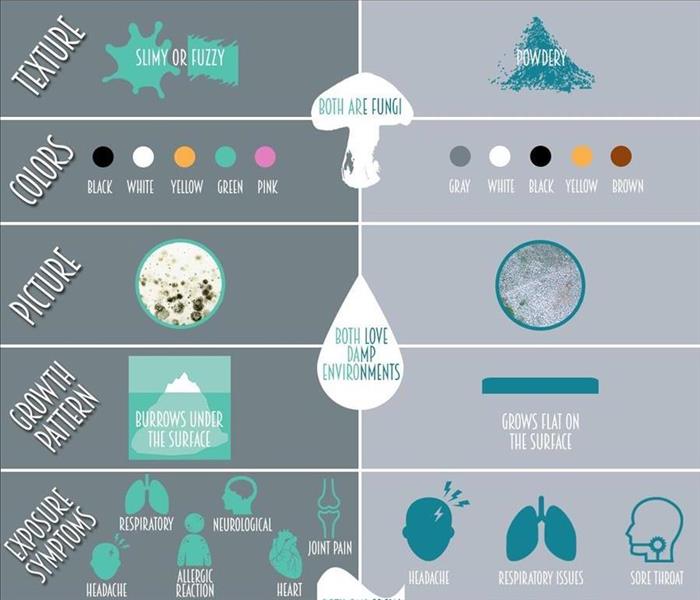 Simple Chart to describe the difference between Mold and Mildew (Mold Left v Mildew Right)
Simple Chart to describe the difference between Mold and Mildew (Mold Left v Mildew Right)
When it comes to mold and mildew, many often wonder, “What is the difference?” HGTV.com compares mold and mildew to siblings, stating that they have a few matching characteristics but they also have some striking differences.
As for similarities, they both strive in warm, moist areas and they both are able to grow on a multitude of surfaces. They are also both two types of fungi that no one is ever happy to find in their home!
Differences between mold and mildew can be seen in their appearance. Mold is usually fuzzy in appearance and can be various different colors, but it is most often black or green. Mildew, on the other hand, usually grows in a flat pattern and may appear powdery. It is usually white or gray in color. One interesting difference between mildew and mold is that there is no use for mildew. On the contrary, some molds are actually used in food production. For example, Penicillium is used in the production of cheese.
While mold and mildew definitely have differences, the methods to prevent mold and mildew in the home are very much the same. All areas of the home need to be kept dry and moisture-free. Humidity levels inside the home should be checked and controlled. Any leaks need to be repaired quickly and HVAC systems should be inspected regularly.
SERVPRO of Howell/Wall specializes in mold testing and remediation. If you suspect mold is an issue in your home, give us a call today! (732) 577-1010.
Mold Prevention Tips
3/29/2018 (Permalink)
In order for mold to grow and thrive, there must be excess moisture, food, the right temperature and lack of ventilation. The most important step that any property owner can take is to identify any humidity, moisture or water problems before they create bigger more costly issues. Look for any water or moisture. Pay special attention around pipes, in basements and crawl spaces. Recognize musty or moldy odors, which indicate mold growth. Your sense of smell may alert you to potential problems you cannot see. Control humidity in bathrooms and wherever water is repeatedly used. Exhaust fans, proper caulking and effective cleaning with a bleach based product will help keep problems away. Inspect your HVAC systems and air conditioners. Regular inspection and maintenance can identify moisture problems or drain clogs before they get worse.
If moisture or mold is spotted contact a SERVPRO of Howell/Wall and our professional team will come out and take a look. Call us anytime, 24/7, 365 days a year 732-577-1010.
What You Need to Know About Mold in HVAC Systems
3/5/2018 (Permalink)
Mold is a natural occurrence that can grow in many different environments as long as the conditions are in its favor. Unfortunately, this is often true for HVAC systems and air ducts, which is concerning because the air flow allows the mold to travel to various areas of the building. HVAC cleaning can reveal such mold growth, and it goes without saying that cleaning vents on a regular basis should be on the to-do list of every property owner in East Naples, Florida. Here’s what you need to know about mold in HVAC systems.
How Do You Know If Your HVAC System Has a Mold Issue?
The first step of ridding your heating, ventilation and air conditioning system of mold is knowing common signs that indicate mold growth. Examples of this are:
• Visible mold in air ducts, drip pan or vents
• Mold smell
• Standing water or high level of moisture in parts of the building
Why Does Mold Grow in HVAC Systems?
Mold in HVAC systems is a problem that many property owners are faced with because it is a breeding ground for mold. Mold grows in moist environments, and condensation or leaks in HVAC systems can provide this moisture. Building in warm areas with high humidity are at a higher risk of developing mold issues. Furthermore, the dust that collects in air ducts is a food source to mold as it contains organic materials, such as skin cells. These organic materials, as well as mold spores, often come from outside through the ducts.
How Can You Prevent Mold in HVAC Systems?
The best way to prevent mold is regular maintenance and HVAC cleaning done by a professional. This should be done at least once a year. Additionally, you have to change your filters once a month and may consider using a HEPA filter. If you live in a humid area, a dehumidifier can prove itself to be very helpful.
Should you notice mold in your HVAC system, it’s important to have an experienced mold remediation professional perform the necessary HVAC cleaning. Always keep in mind that it is crucial to address the mold problem as soon as possible.
For more information on mold visit us at http://www.SERVPROhowellwall.com/
With all these heavy rains, mold
2/16/2018 (Permalink)
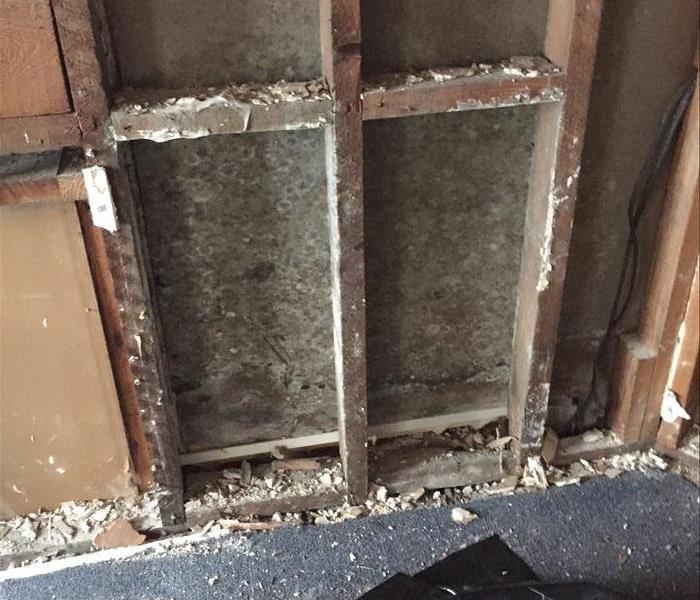 Picture of Suspected Mold Growth
Picture of Suspected Mold Growth
Where to Test for Black Mold in Your Home
Black mold is one of the worst fears you might have as a homeowner. Toxic black mold (Stachybotrys chartarum) grows in common household features such as carpet, drywall, insulation, and sub-flooring. It grows when these household materials have been in contact with moisture. As it grows, it releases spores into the air. These spores can be harmful or even fatal to humans. At low levels of exposure, spores can cause respiratory problems and irritation; at severe levels of exposure, it can cause bleeding in the lungs and severe nausea and vomiting.
Where to Test for Black Mold
Testing for mold is essential, and you should have a dwelling inspected for black mold before you buy it or sign a lease. If you suspect there may be black mold in your home, or you have never had your home tested, contact SERVPRO of Howell/Wall for professional mold remediation services in the Howell and Wall area. While many aspects of home-ownership can be handled in a D.I.Y. fashion, black mold is not something to be messed around with.
Carpet
Black mold loves to live on the carpet. Dust collects in carpet fibers and those same fibers trap the humidity and dampness that enables mold to grow. Carpets in below-ground levels are especially susceptible to mold as there is more humidity there.
Carpet mold is often not visible from the surface, except in severe cases, which makes testing for it necessary even if you don't see any evidence.
Air Conditioning and Heating Vents
Air conditioning and heating vents actually create ideal conditions for black mold to grow. Dual-purpose vents that both heat and cool your house raise that risk as they are in constant use.
When you have mold in your air vents, those spores are being circulated throughout your home. The sooner you can perform mold remediation procedures, the better. SERVPRO of Howell/Wall has a 24-hour mold emergency service hotline to quickly begin the process of cleaning your air vents.
Drywall
Mold is unfortunately common in drywall, as it traps humidity. This is especially common as the seasons change from winter into spring. Because of the nature of it, mold in drywall is rarely visible except in severe cases. For this reason, it's imperative to have a potential home be tested for mold in the walls before you sign a lease or put down a deposit.
Mold in Jackson, NJ
10/2/2015 (Permalink)
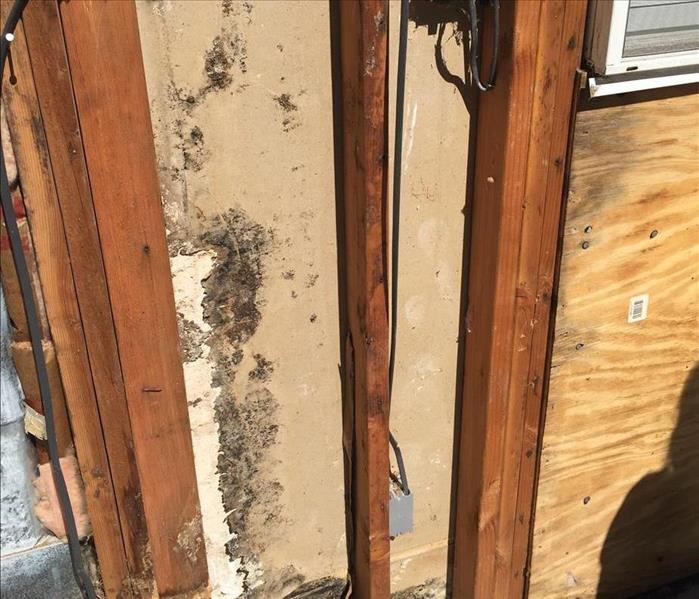 Mold on the customer's exterior wall.
Mold on the customer's exterior wall.
We were called into a residence in Jackson, NJ which experienced mold damage due to a roof leak. Our customer was relieved to see the results of our extensive mold remediation.
Mold in Howell
8/5/2015 (Permalink)
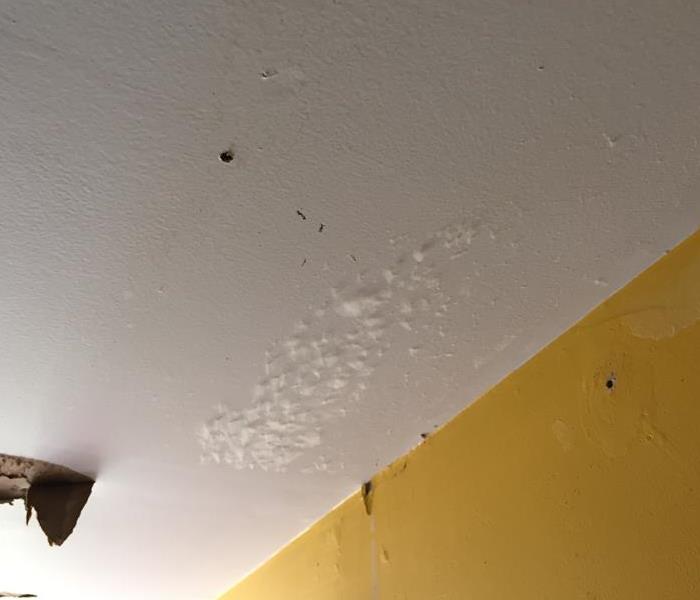 Mold growth above kitchen cabinetry
Mold growth above kitchen cabinetry
We were recently called to action on a water/mold loss in Howell, NJ. Unfortunately this was a case of DIY gone bad. The homeowner did a good job of tearing out carpet pad and lifting carpet for in place drying, however the severity of this situation was too much for a DIY'er and required the assitance of the SERVPRO of Howell/Wall team. After identifying wet drywall in several rooms, we began demolition, only to find widespread mold throughout.
We continued removing all drywall with evident mold growth and began remediation to all the wood framing. After a few days of intense cleaning/remediation, this job looked like nothing ever even happened. Our customer was delighted to see their home on its way to preloss conditions.
SERVPRO of Howell/Wall is always here to help. Call us at 732-577-1010 anytime.





 24/7 Emergency Service
24/7 Emergency Service


